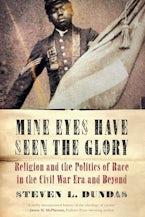
Bonds of Union
Religion, Race, and Politics in a Civil War Borderland
By: Bridget Ford
424 Pages
- Hardcover
- ISBN: 9781469626222
- Published By: University of North Carolina Press
- Published: March 2016
$45.00
“Bonds of union” was a familiar expression used by Americans in the 19th century. Bridget Ford seeks to explicate the meaning attached to this phrase in the 1840s through 1860s in her book, Bonds of Union: Religion, Race, and Politics in a Civil War Borderland. According to Ford, these words were “reserved for considerations of great import: establishing religious and political communities and protecting family love” (x). Given the import of this phrase, Americans struggled to define their bonds of union without the bonds of slavery (xi).
Ford focuses on how the concept of bonds of union was used in the Civil War borderlands of Ohio and Kentucky, specifically Cincinnati and Louisville. This region is of particular interest for several reasons. First, it was host to some of the nation’s worst religious and racial conflicts between 1840 and 1860. Second, Cincinnatians played a crucial role in the formation of the Republican Party in the 1850s, while Louisvillians strove to emancipate Kentucky’s slaves in the late antebellum period. Third, Kentucky remained loyal to the Union despite its location south of the Ohio River, and emancipated its slaves on July 4, 1865, notwithstanding its exemption from the Emancipation Proclamation.
Ford examines “culture in practice” through an exploration of devotional literature, antislavery fiction, poetry, and other historic writings. As Ford explains, “this book examines the interplay of cultural expression with action to understand how Americans living in this borderland rendered the bonds of slavery incompatible with the bonds of Union” (xv). In particular, Ford argues that Kentucky remained in the Union and voluntarily emancipated its slaves because of the intimate bonds of union that began to be formed in the 1840s.
Ford wrote this book because she believes that the work employed to form religious, racial, and political bonds of union “merits revisiting in our own historical moment” (xvii). The broadly-defined concept of union that Ford seeks to recover is “not union per se, but the imagined connections that seemed essential to join disparate parts into one whole” (xviii). Ford is interested in lived experiences, however, rather than abstractions.
Ford stresses that Bonds of Union does not offer its readers a “usable past.” Her actors had many limitations, such as their abhorrence of interfaith or interracial marriage and the segregated military and churches. Nevertheless, she hopes that her readers will “gain perspective from the strenuous efforts to forge connections among people with different origins and histories, and to make those bonds a condition of the Union’s persistence” (xviii). In this sense, Bonds of Union seeks to tell a positive story from this tumultuous period in America.
Though other scholars have recently focused on Kentucky’s sympathies with the Confederacy, Ford challenges her readers to ask why this border state remained loyal to the union. Through her nuanced argument, Ford suggests that it did so through envisioning an America without slavery. In doing so, she has produced a fresh narrative that encourages historians to think about the Ohio River Valley in a different way.
Kevin M. Burton is a doctoral candidate in the Department of American Religious History at Florida State University.
Kevin BurtonDate Of Review:August 7, 2018
Bridget Ford is associate professor of history at California State University, East Bay.











